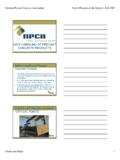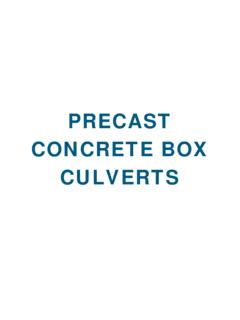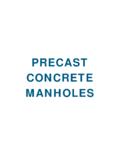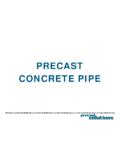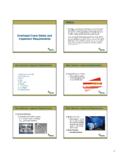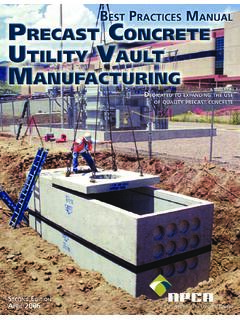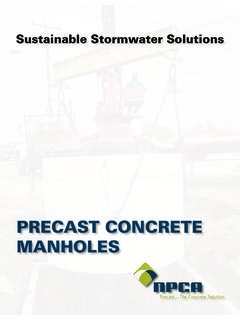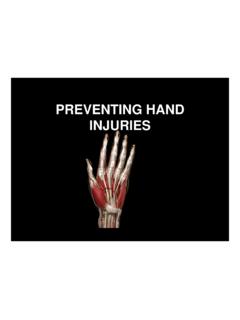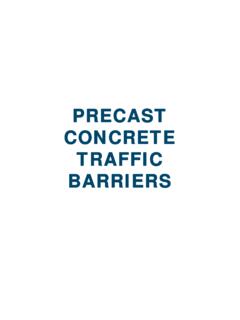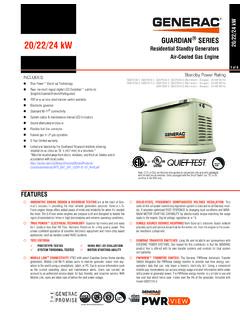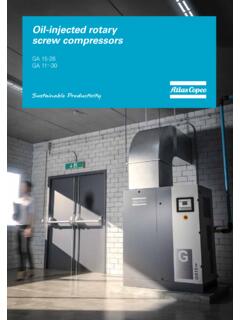Transcription of Notice Overhead Crane Safety and Inspection Requirements
1 Notice It is the responsibility of the Owner/User to install, inspect, test, maintain, and operate a Crane or associated lifting equipment in accordance with the applicable volume of the ANSI/ASME B30. Safety Standard, OSHA Regulations, and ANSI-NFPA 70, National Electric Code and local regulations and laws. If the Crane or associated lifting equipments is installed as part of a total lifting system, it is also the responsibility of the owner/user to comply with the applicable ANSI/ASME B30 volumes that address other types of equipment used in the system.
2 Overhead Crane Safety y and Further it is a responsibility of the Owner/User to require all personnel who install Further, install, inspect inspect, test test, maintain, and operate a Crane or associated lifting equipment to read and to comply with the Inspection Requirements contents of the instruction manuals furnished by the manufacturer of the Crane or associated lifting equipment, and the applicable portions of the volume of the ANSI/ASME B30 Safety Standard, OSHA Regulations, and the ANSI/NFPA 70, National Electric Code.
3 If the Crane or associated lifting equipment is installed as part of a total lifting system, the applicable ANSI/ASME B30. volumes that address other types of equipment used in the systems must also be read and followed by all personnel. Daily Operator Inspection Requirements Daily Operator Inspection Reuirements Tagged Crane or Hoist Tagged Crane or Hoist Control Devices Check that the Crane or Brakes hoist is not tagged with Hook an out out-of-order of order sign sign. Hook Latch Reeving Limit Switches Oil Leakage Unusual Sounds Daily Operator Inspection Requirements Daily Operator Inspection Requirements Control Devices Check that all motions agree Brakes (Travel).
4 With control device markings Check that all motions , Up/Down/Fwd/Rev. do not have excessive drift and that stopping distances are normal (approx. 10% of high speed travel. Hoist Brakes No drift permitted. 1. Daily Operator Inspection Requirements Daily Operator Inspection Requirements Hook Hook Latch Check for damage, Check that hook latch, if cracks, nicks, gouges, p provided, is not missing g deformity of the throat opening, wear on and that it operates saddle or load bearing properly. point, and twist. Refer to the manual furnished by the original manufacturer of the Crane or hoist.)
5 Daily Operator Inspection Requirements Wire Rope Inspection Broken Wires Wire Rope Broken Wires Excessive Wear Kinks Crushing Stretching 10 wires in one rope lay Birdcaging 5 wires in one strand in one rope lay Rope Measurement Wire Rope Inspection Excessive Wear Wire Rope Inspection Kinks Loss of 1/3 of the rope diameter of individual wires. 2. Wire Rope Inspection Crushing Wire Rope Inspection Stretching Wire Rope Inspection Birdcaging Wire Rope Inspection How to Measure The components of a wire rope each have a small but definite size tolerance.
6 Therefore, the rope itself must have a diameter at least equal to the nominal, or catalog, size never smaller. Wire Rope Inspection Daily Operator Inspection Requirements Replace any wire Load Chain rope or red tag if you Check load chain, observe any of these including end conditions! diti ! connections for excessive wear, twist, distorted links or stretch, beyond the manufacturer's recommendations. 3. Daily Operator Inspection Requirements Daily Operator Inspection Requirements Limit Switches Reeving Check that the upper limit Check that the wire rope or device stops lifting motions of load chain is properly the hoist load block before reeved and that rope or striking any part of the hoist or Crane .
7 Crane load chain parts are not Caution: exercise extreme twisted about each other. care during this test to Make sure wire rope is avoid striking any part of properly seated in drum the hoist or trolley with the grooves. hoist load block or lift beam in the event of a faulty limit switch. Daily Operator Inspection Requirements Daily Operator Inspection Requirements Oil Leakage Unusual Sounds Check for any sign of Check for any unusual sounds such as oil leakage g on the Squealing q g Crane and on the Grinding floor area beneath Unusual vibration the Crane .
8 From the Crane or hoist mechanism while operating the Crane and hoist. Daily Operator Inspection Requirements Periodic Inspection Warning and Safety A Periodic Inspection is a detailed Labels and Warning visual and operational Inspection Devices whereby individual components Check that warning and are examined to determine their other Safety labels are not condition. The Periodic Inspection missing and that they are is performed as often as quarterly legible. Check that audible and visual warning devices based on service, environmental are operational.
9 And application factors as determined by a qualified person or as outline in the following table. 4. Periodic Inspection Items Periodic Inspection Chart Required by OSHA. (as required by OSHA) A. Structural Members B. Signs and Labels C. Connection Points D. Sheaves and Drums Number of Shifts Operated per Day E. Shafts, Axles, Wheels, Couplings F. Brakes ((holding g and control)). ASME B30. 2. G. Indicators, Gauges Service Class 1 Shift 2 Shifts 3 Shifts H. Self-contained Electric, Hydraulic, or Gasoline Powered Generating Units Frequency of Inspection I.
10 Transmissions Normal ANNUAL ANNUAL ANNUAL J. Electrical Components ANNUAL SEMI-ANNUAL TO ANNUAL SEMI-ANNUAL K. Covers and Guards Heavy L. Bumpers and End Stops Severe QUARTERLY QUARTERLY QUARTERLY M. Trolley and Runway Rail N. Runway Structure O. Conductor System P. Below-the-Hook Devices Periodic Inspection Items Periodic Inspection Items Required by OSHA Required by OSHA. A. Structural members, such as girders, end trucks, B. Signs and Labels footwalks, trap doors, Check for proper ladders, handrails, trolley capacity labels.
